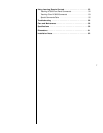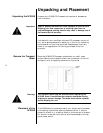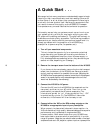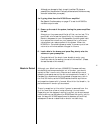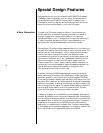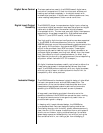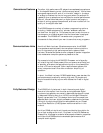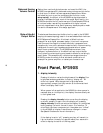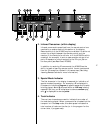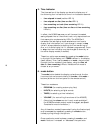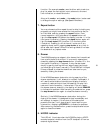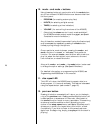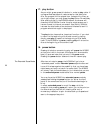
15
Design of the fully balanced DAC/analog output module follows
the Mark Levinson tradition of rigorous component selection. An
unusual hybrid design approach incorporating both advanced
Surface-Mount and “through-hole” technologies, allows us to
utilize the optimum part at each location in the circuit, without
the constraints on parts selection normally associated with
traditional PCB assembly practices. Every active device has been
painstakingly selected for top technical performance, with final
selections of top performing devices determined by numerous,
controlled sonic evaluations.
Advanced Digital Filter Just as with Mark Levinson separate Digital Audio Processors, such
Techniques as our Nº30.6 Reference, the Nº390S incorporates advanced digital
filter techniques carefully chosen to optimize the sonic performance
of its on-board digital processor. Whether playing a CD, or decoding
a digital signal received through an auxiliary input, sample depth
is increased to 24 bits and sample rate increased to 352.8kHZ or
384kHz (input rate dependent) prior to conversion to an analog
signal. This sophisticated “processing” of the digital signal before
conversion (referred to variously as “unconversion”, “upsampling”,
or “oversampling”) is a fundamental contributor to the excellent
sound achieved by all Mark Levinson digital processors. The
Nº390S confirms its internal conversion rate on its front panel
display each time a disc is loaded, or an auxiliary input is chosen
and locked.
The Nº390S also incorporates High Definition Compatible
Digital® decoding to take full advantage of the resolution avail-
able from HDCD encoded 16-bit CDs. The HDCD format retains
more of the resolution inherent in modern high resolution record-
ings than can be accommodated by the normal CD standard by
encoding information more efficiently within the 16-bit space
available on the disc.
Digital to Analog Digital to analog conversion within the Nº390S is performed at an
Conversion extraordinarily high level and features a Mark Levinson-developed,
balanced implementation of the Analog Devices AD1853—a new
class of multi-bit Sigma/Delta DAC devices delivering superb
technical performance. In addition to its unusual multi-bit
architecture and unlike typical Sigma/Delta devices, the AD-1853
has a differential current output stage, which allows us to optimize
the critical current-to-voltage(I/V) conversion stage with dedicated
operational amplifiers possessing superlative rise time and bandwidth
characteristics. Following this, a new active analog filter circuit,
implemented in a differential amplifier, sums both halves of the
balanced signal and provides superb common mode noise rejection
in addition to its outstanding filter characteristics.
This approach to the Digital-to-Analog circuit block yields distortion
and noise levels that are extraordinarily low and contributes greatly
to the natural sound of the Nº390S.



